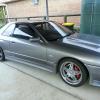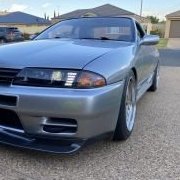Announcements
-
Similar Content
-
Latest Posts
-
By TurboTapin · Posted
CTIS (Central Tire Inflation System) has existed since the 80's. I'm looking into buying a Hummer H1 and they generally included it. -
My idle is set at 950rpm though - Moving the timing around 20 degrees is not really what I'd call a calm idle. That said... neither is chop, by definition. The LS ECU likes to adjust timing to hold idle as opposed to air. It'd work, but generally speaking there'd be a discrepancy in the base idle and the IACV would want to move the timing around anyway to maintain said idle. I think I'm just going to keep the timing steady anyway. Preserve my engine mounts. My aircon is now officially regassed. As the guy was reversing I noticed my reverse lights do not operate, along with my reverse cam. This is a bit distressing, because 100% of guides talk about which wire to connect to backup cams as "the goes with the [other color] wire". Often when doing conversions. Unfortunately the R34 colour wires aren't documented Unfortunately I had a T56 Magnum gearbox with it's reverse switch, which also isn't documented. Unfortunately there's definitely not documentation for people with both of these in the one car. Unfortunately I forgot. After many hours of this, I have a reverse cam and reverse lights again. The wire going through the trans tunnel to the reverse switch had broken. Upon inspection, it looks like this one wire had about 7 spade terminals and extensions in it.. for reasons I cannot possibly comprehend. I also spent the 750 hours required to clean up the wiring behind my head unit which now looks like this: This is a monumental improvement relative to what used to be there WRT triple gauges, head unit, traction control, wideband controller, and whatever the f**k OEM stuff still exists there in various states of connectivity/needed. Next step is to check in at the Exhaust shop to see/confirm how much clearance I have, to decide what mid mufflers or 'resonators' (which are just straight through, narrower mufflers) I can add and hopefully cut out a lot of exhaust leaks, pinhole, v-band or otherwise. But first step will be to 'take a look' before the next step.
-
By Dose Pipe Sutututu · Posted
Fark the AFM card and Nistune, Haltech Nexus S3, DBW, cruise control, flex fuel, dis dat. -
It's most likely the bolt/bush where the cover bolts back wore and allowed cover to move forward.
-
Still haven't put the injectors and R35 AFM in so we can tune the bloody thing for the HG highflow it got mid last year! I think I can forecast the upgrade path to a bigger twin scroll, external gate, Haltech, flex setup, Samsonas, dis dat, etc will be .... a while away!
-








Recommended Posts
Create an account or sign in to comment
You need to be a member in order to leave a comment
Create an account
Sign up for a new account in our community. It's easy!
Register a new accountSign in
Already have an account? Sign in here.
Sign In Now